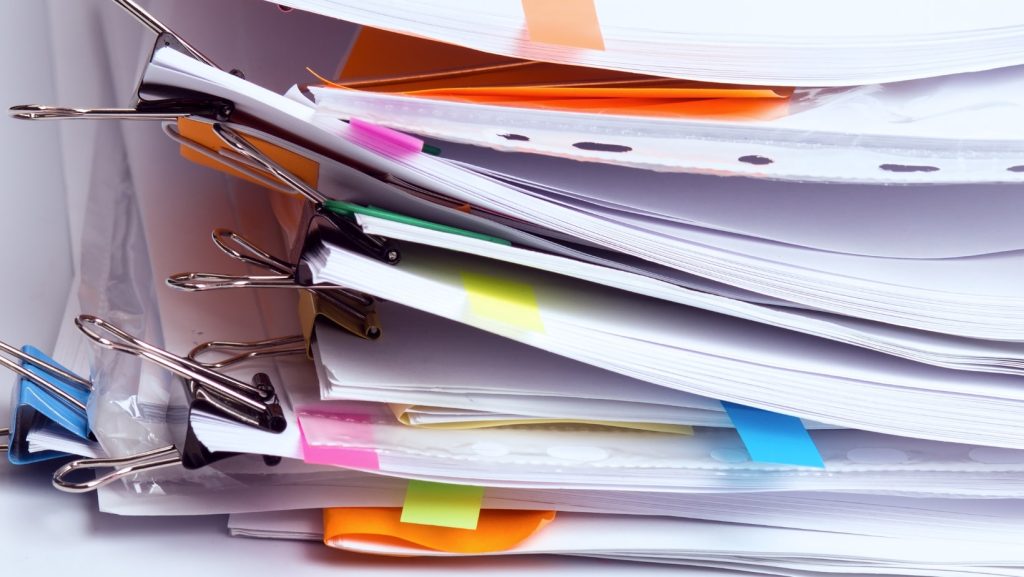Have you ever wondered why some nonprofits, businesses, or research initiatives seem to effortlessly attract funding while others struggle to even make it past the first round?
Grants can be the lifeline that brings dreams to life, but here’s the truth: winning one isn’t a stroke of luck — it’s a skill.
The competition for grants is intense, with countless applicants vying for limited resources. So, how do you make your grant application stand out in a sea of proposals? How do you make your proposal shine? How do you ensure your project resonates with funders?
That’s exactly what this article is here to uncover. In this guide, we’ll explain how to win grants with confidence and give you insider tips to boost your chances of success. We’ll walk you through every step of the process, from careful preparation to strategic follow-ups after submission.
So, here’s what it takes to secure a grant successfully:
1. Find the Right Grant
Success begins with finding the right grant types and knowing where to look. Start with platforms like:
- Grants.gov: One of the largest federal grant sites, covering everything from education to healthcare initiatives.
- Foundations: The Foundation Directory Online is a comprehensive resource for finding private foundation grants. Tools like the Community Foundation Locator can also help you identify community foundation grants available in your specific region.
- Local government programs: Counties and cities often offer smaller, niche funding opportunities for community projects.
- Industry-specific grants: From arts to agriculture, specialized grants exist. For instance, the National Endowment for the Arts supports creative projects, while the US Department of Agriculture funds rural and agricultural innovation.
2. Understand What Funders Want — The Cornerstone of the Grant Process
Grantors are not faceless ATMs; they have specific missions, values, and goals they aim to achieve with the resources they provide in grants. The key to a successful grant proposal is to determine exactly what they want and show them you can deliver it.
Here are the essential steps to ensure you’re on the right path:
Read the Guidelines Thoroughly
Grant guidelines are more than instructions — they are your roadmap to success. Every eligibility clause, focus area, and submission deadline is a critical piece of that map leading you to the finish line.
Missing a detail, like an attachment or submission date, can lead to automatic disqualification. So, pay close attention. Many proposals fail not because the idea isn’t worthy but because applicants overlook key requirements.
Guidelines also hint at funders’ core values and priorities, providing insight into the types of organizations they are most likely to fund.
Align with their Mission
Funders don’t just hand out money — they want to make an impact that is aligned with their mission. The most effective applications feel like partnerships, not transactions.
Tailor your proposal to align with their cause. Your project should reflect the grant’s objectives as though it’s solving the same problem the funder wants to address.
Use their language and priorities within your narrative, showcasing that your work resonates with their goals. For example, if a foundation’s focus is youth education, emphasize how your initiative empowers young learners and enhances their experience.
Research Past Winners
Many organizations publicly share the grants they’ve awarded in the past — these are gold mines to determine what they value.
Look for trends: What themes stand out? Do they fund startups or established nonprofits? Do they prefer innovation or replication of proven models?
For instance, if a tech foundation funds mostly scalable digital solutions, it may not be the right fit for your community garden project. By understanding these patterns, you can fine-tune your proposal to align with the funder’s expectations (or decide not to apply at all.)
Tip: Don’t force a fit
Just as a poorly fitting job would leave you frustrated, forcing a grant proposal to fit where it doesn’t belong can backfire. Grantmakers can sense when a project is shoehorned into their mission, and they often reject proposals that feel disingenuous.
Instead, channel your energy where your project genuinely aligns with the grant’s purpose. When you apply to the best match, your enthusiasm and authenticity will shine through — qualities that funders appreciate more than you might realize.

3. Craft a Standout Proposal
Your proposal is the heart of your application process — it’s what separates your pitch from the pile of others competing for the same funding. Imagine you’re the reader on the other end: What grabs your attention? What sparks curiosity?
A standout proposal doesn’t just communicate facts — it connects emotionally, convinces with clarity, and stands firm on practicality. Here’s how you can ensure that:
Strong Problem Statement
Start with a sharp and concise description of the problem you aim to solve. Highlight why the issue matters now, demonstrating its impact and the potential consequences of inaction. Use real stories or case examples that bring the issue to life.
For instance, instead of writing, “Lack of access to educational resources is a problem,” try, “Every morning, 9-year-old Mia watches her brothers leave for school, knowing she won’t join them. In her rural village, no school accepts girls beyond the third grade. She’s not just missing school — she’s missing out on a future.”
This approach invites funders into the heart of the issue, making it personal and urgent.
Specific Goals and Outcomes
Ambiguous goals are like fog — they cloud the path forward. Grantmakers want to see clear, achievable goals backed by measurable outcomes.
Outline your objectives in a way that allows the grantor to track progress and success. Use concrete indicators, like numbers, percentages, or timelines, that align with the funder’s expectations and show you’ve thought through every detail.
For example, instead of saying, “We aim to improve literacy,” frame your goals with precision: “Within 12 months, 85% of children in our program will improve their reading fluency by at least 20 words per minute.”
Measurable objectives reassure funders that your impact can be evaluated, making it easier for them to justify their investment.
Compelling Narrative
Every great proposal tells a story of transformation — where the funding you seek becomes the turning point. Make the reader feel the weight of what’s at stake if the issue goes unresolved.
Your narrative should show grantors that their dollars are the missing piece to solving a crisis. The more it resonates emotionally and logically, the more convincing your case becomes.
For example, “Mia’s dream is closer than ever — our project has negotiated with local schools to reopen their classrooms. But without the final $50,000 needed for supplies, hundreds of girls like Mia may never see the inside of a classroom again.”
Budget Transparency
A vague budget leaves funders wary, but a well-constructed, transparent one builds trust. Provide a detailed breakdown of how the funds will be allocated, showing exactly where each dollar will go.
Make sure your budget is reasonable and aligned with the project’s scope. Be specific: “$15,000 will cover teacher training; $8,000 will go toward learning materials; and $2,000 will support transportation for rural students.”
Consider adding a contingency plan for unexpected expenses — this shows you’ve thought through every detail and are prepared for unforeseen challenges.
Avoid Jargon
While your field may have technical language, your proposal should remain accessible to non-experts. Write in a way that communicates your expertise without alienating readers who aren’t specialists.
Use plain language that focuses on the essence of your idea, ensuring your message is clear to a broad audience, including decision-makers unfamiliar with your niche.
For instance, instead of saying, “Our project will implement community-based participatory research,” say, “We’ll work hand-in-hand with community members, listening to their needs and co-creating solutions.”
4. Build Credibility
When applying for grants, credibility is the foundation of earning a funder’s trust. A well-crafted application not only communicates the importance of your project but also assures grant reviewers that you have the capacity to deliver on your promises.
Here’s how you can build credibility strategically:
Proven Track Record
Grants are often given to those who have already proven they can deliver. Grantmakers want to know the closest thing the potential grantees have accomplished that relates to the current project.
Demonstrating a history of success will set you apart. Highlight relevant past achievements, such as a completed pilot program or previous grants successfully managed.
Showcase the tangible outcomes you’ve delivered to establish confidence that your team can replicate that success with their funding.
Team Expertise
Your team isn’t just a list of names and titles. They are the engine behind the vision, and their qualifications can make or break your proposal.
Emphasize key members’ skills, expertise, and accomplishments, and explain why they are perfectly suited to execute this project. Share short, humanizing insights about their practical experience.
For example, the executive director who spearheaded disaster relief efforts with strategic leadership under impossible deadlines or the finance lead who successfully managed multi-million-dollar budgets.
These narratives show that your team doesn’t just have resumes; they have stories of resilience and success.

Letters of Support
Every great idea needs allies. Endorsements from respected stakeholders can reinforce the value of your proposal. These letters aren’t just about flattery; they act as third-party validation, demonstrating that others in your field believe in the merit of your mission.
Aim to secure letters from partners, community leaders, past collaborators, or experts whose opinions carry weight within your industry. Their support turns your application from a hopeful pitch into a community-backed mission.
Clear Impact Measurement Plan
The most compelling nonprofit organizations don’t just succeed; they prove their success with hard data. Funders want evidence that their investment will make a difference.
Be specific about how you plan to track progress and measure success. Go beyond basic metrics: Show grantors that you’ll measure both quantitative and qualitative results, perhaps through surveys, interviews, and key performance indicators (KPIs).
Describe how you’ll stay accountable and communicate progress, whether through quarterly reports, dashboards, or public updates.
Bonus Tip: Don’t Oversell — Back Every Claim with Evidence
Avoid exaggerated promises that can raise red flags. Grantmakers value realistic projections backed by data or case studies. Each claim you make should be supported with solid evidence, ensuring that your proposal remains both compelling and credible.
For example, a bold claim like, “We’ll reduce homelessness by 40% in one year,” without a credible path forward, will raise eyebrows. Instead, try this: “We aim to reduce homelessness by 10% in the first year through proven housing-first methods. Here’s how we achieved similar results in our pilot initiative.”
5. Attentive Submission and Follow-up
Once you’ve poured your energy into crafting a strong grant application, the final steps of submission and follow-up can significantly impact your success.
A well-executed submission process not only reflects your professionalism but also minimizes the risk of avoidable errors. Here’s how to navigate this critical phase:
Prepare Early
Aim to send in your application well in advance of the due date. This gives you time to troubleshoot technical issues or correct last-minute errors without the pressure of a ticking clock.
Grant portals often experience heavy traffic close to deadlines, and even small delays could put your submission at risk.
Imagine you submit your application exactly five minutes before the deadline. But despite your thorough work, it doesn’t go through due to a system glitch. Submitting early reflects a proactive, organized approach and avoids such technical issues.
Attention to Detail
The difference between a winning proposal and a rejected one can sometimes come down to a missing attachment or an unchecked box. A common (and preventable) nightmare: you submit everything perfectly, but a required letter of support never made it into the final upload.
Don’t let bureaucratic details sink your chances. Create a checklist and triple-check that all required attachments, signatures, approvals, and forms are included.
These small administrative tasks are easy to miss, but they are essential for ensuring your hard work is reviewed.

Follow Instructions
Carefully adhere to the funder’s guidelines for formatting, naming files, and submission procedures. Ignoring these details, even accidentally, can create a negative impression or cause your application to be excluded.
Suppose the instructions asked for a PDF, but you sent in a Word document. Your application would be disqualified before anyone will even read it.
Grantmakers are meticulous about instructions because the ability to follow them reflects your professionalism. So, stick to the requested file formats, word limits, and procedures to show respect for the process and increase your chances of success.
Post-Submission Follow-up
Many people treat rejection as a closed door, but seasoned grant seekers know better. A rejection isn’t the end; it’s a learning opportunity.
If your application is unsuccessful, reach out to the grant committee with a polite, professional request for feedback. Many funders offer constructive insights on where your proposal fell short, which can be invaluable for future submissions.
Not every organization offers this, but when they do, it’s like finding a map for your next application. Thoughtful follow-ups also show your dedication to improving and building positive relationships with the funder.

Keep Records
Winning grants is not a one-time achievement but a strategic, long-term endeavor. And here’s the thing: memory is a poor substitute for structure.
So, use a grant calendar or tracking system to manage multiple submissions and outcomes. Staying organized allows you to monitor deadlines, follow-ups, and trends in feedback.
A clear system helps you avoid missed opportunities and reduces stress, giving you the bandwidth to focus on refining your applications. The result? Doubled up grant funding success rate.
6. When in Doubt, Get Help from Grant Funding Experts
Writing a winning grant proposal can be challenging, even for experienced nonprofit organizations. It requires more than enthusiasm and a good idea — it demands time, strategy, research, meaningful relationships, and the ability to communicate your project clearly through persuasive grant writing.
If you find yourself juggling multiple roles or feeling overwhelmed by the grant’s requirements, this could be a signal that bringing in external expertise is a smart, proactive choice rather than a last resort.
Grant consulting firms, such as ours, exist for this very reason — to shoulder some of
that load and keep your organization on course.
If you’ve seen one under, you’ve seen one funder. Grant experts know that each funder is unique, and we have the skills and expertise to research the funder carefully and tailor proposals to their distinct goals and requirements.
Here’s more on how we can help maximize your chances to win grants:
How Experts Help with Successful Grant-Seeking
Grant consultants bring specialized knowledge that can elevate your grant-seeking effort. With their experience, they know how to steer grant seekers in the right direction, sidestepping the common pitfalls that can derail an otherwise solid proposal.
Their greatest strength lies in their ability to align your goals with the funder’s priorities and criteria. It’s not just about listing facts and figures; it’s about telling a story that resonates with the people reading it.
Experts excel in framing your narrative with precision, ensuring it stands out in a crowded field of applications.
Grant Writing Specialists
A major part of the crucial work happens at the grant writing stage, where words either win grants or leave applications unnoticed. The expert grant writers are trained to craft proposals that are clear, compelling, and strategically structured.
They understand the art of saying exactly what funders want to hear — without fluff, but with enough emotion to capture interest. Their finely tuned expertise ensures that your proposal is polished to perfection, minimizing the risk of small mistakes that could cost you a grant.
End-to-End Support
A good consulting firm offers more than just grant writing services. They can guide you from start to finish, identifying relevant grant opportunities, helping develop realistic budgets, and keeping you on track with submission deadlines.
In some cases, they even provide training to your team, ensuring you build the skills to manage future applications independently. This kind of support can be transformative for grant seekers that lack the internal capacity to navigate the complex grant process alone.
A Second Set of Eyes
Even if you prefer to handle most of the process yourself, having a professional review your proposal is a great way to ensure you always win grants.
Think of it like having a co-pilot before takeoff — someone to spot weaknesses you may have overlooked or polish sections that need clearer articulation.
This small investment can significantly increase your chances of success, catching minor errors or missed opportunities that could otherwise fall through the cracks.
Long-Term Relationship
Building relationships with consulting firms can benefit you in the long run, especially if you’re interested in seeking more grants over time. The lessons learned from one application can position you to win the next.
Eventually, a trusted grant expert becomes more than just a service provider — they become a strategic partner. They learn the nuances of your nonprofit organization, understand its vision, and can help you develop long-term strategies to align your programs with evolving grant-seeking trends.

Key Takeaways
So, in a nutshell, winning grants requires strategic preparation, precision, and persistence. It’s not just about submitting one application and hoping for the best — success comes from treating grant-seeking as a long-term strategy.
Even if your first attempt doesn’t win, every application refines your approach and strengthens your skills for upcoming opportunities. Persistence pays off, and each step forward helps promote progress toward securing the vital funding your organization needs.
But what if you didn’t even have to worry about missing the mark? With Resurgens Impact, your application will be set up for success from the beginning.
Partner with us, and we’ll handle the entire process, from research and grant writing to submission, so that you can focus on your mission. Let us help you win grants by turning your next application into one that gets funded.




